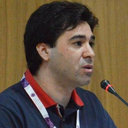Drug-Induced Epistaxis: An Often-Neglected Adverse Effect.
Atslēgvārdi
Abstrakts
BACKGROUND
Epistaxis is an active nose bleeding with a population occurrence of approximately 60%. Although epistaxis is a common clinical complaint, the majority of the cases are benign and caused by local induced factors (e.g., trauma and local inflammation). Nevertheless, it is also recognised that epistaxis can be induced after some drugs intake.
OBJECTIVE
Due to the increasing use of drugs or drug combinations that potentially may induce epistaxis, this review aims to alert healthcare professionals for this often neglected adverse drug effect and its possible complications.
METHODS
A comprehensive literature search was performed on PubMed and Google Scholar databases, considering the literature published from January 1985 to December 2015, using medical terms related to drug-induced epistaxis, nosebleeds and nasal blood supply.
CONCLUSIONS
As expected, anticoagulant and antiplatelet drugs are the main pharmacotherapeutic agents associated with epistaxis, particularly warfarin, dabigatran, rivaroxaban and aspirin. However, it was reported that some selective serotonin reuptake inhibitors, intranasal corticosteroids, certain antibiotics and other drugs or drug associations can also be responsible for nosebleeds. Although most of these epistaxis episodes are mild to moderate, being spontaneously reversed or requiring only minor medical approaches to control it, there are several case reports, as well as retrospective and prospective studies, documenting severe epistaxis episodes after specific medicines intake. In these cases, some invasive medical interventions are demanded to manage the bleeding and avoid life-threatening consequences.
CONCLUSIONS
This work provides an integrated and comprehensive review on drug-induced epistaxis bridging the gap in the current scientific literature addressing this topic. Therefore, the scientific information gathered and discussed will be valuable to raise awareness among doctors and pharmacists for this drug-related problem, as well as to promote their active pharmacovigilance and reinforce patient education.


